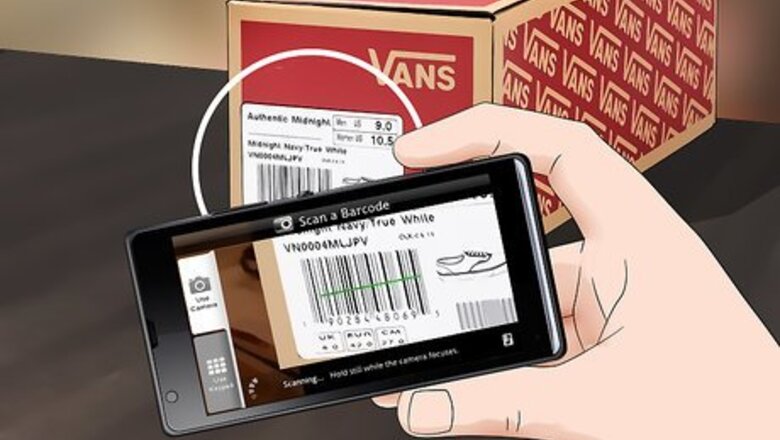
views
- Use a barcode scanning app to scan the barcode on the Vans box. Make sure the product that comes up matches the shoe you're looking at.
- Look for a dark, well-made logo printed on the insole of the shoe. The shoes might be fake if the insole logo looks faded or irregular.
- Examine the quality of the shoe. Real Vans have tight, even stitching and firm laces.
Checking the Packaging
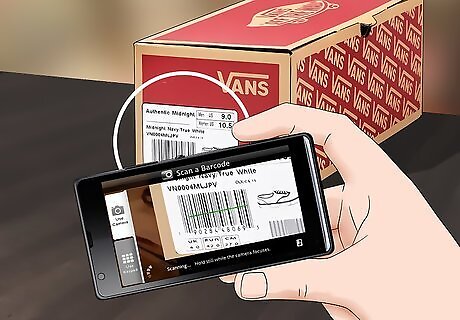
Run the barcode. The box should have a label that includes shoe size, country of production, and a barcode. Use your phone to scan the barcode. The barcode should correspond to the type of shoe in the box. To scan a barcode with your phone, go to the app store that corresponds with your phone. Search for barcode reader apps. Some reliable programs include ShopSavvy and ScanLife. When you are ready to scan a barcode, open the app and use the camera on your phone to run it. If there is no label, the shoes are fake.
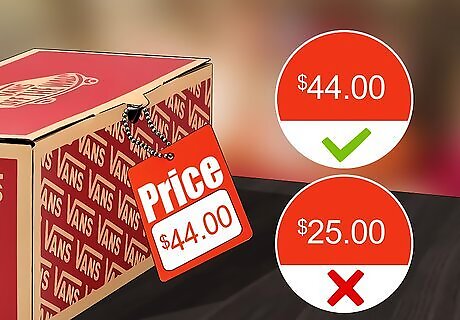
Check the price. Vans are almost always at least $40 per pair. If someone is selling new Vans for less than that, they are likely fake.
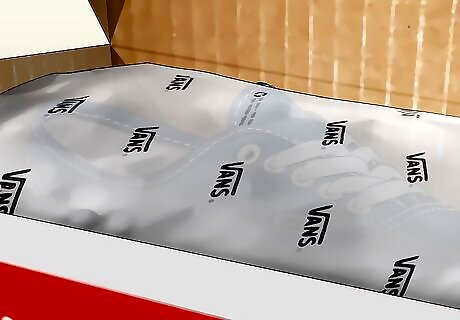
Check for package paper. There should be paper inside the box to protect the shoes from getting scuffed up. If there is no paper, the shoes are likely fake.
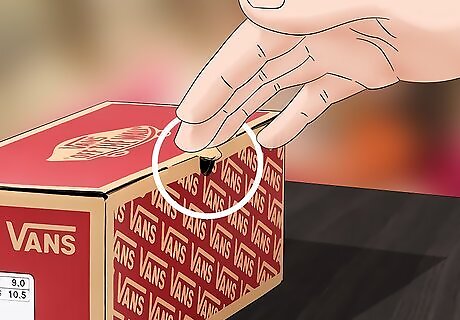
See if the box closes correctly. Even the boxes on Vans shoes are well made. There should be a locking mechanism. A tab on the top of the box will be inserted on the inside of the box, holding it closed. Cheap imitations often have no locking mechanism. The top will drape over the bottom of the box, with nothing holding it in place.
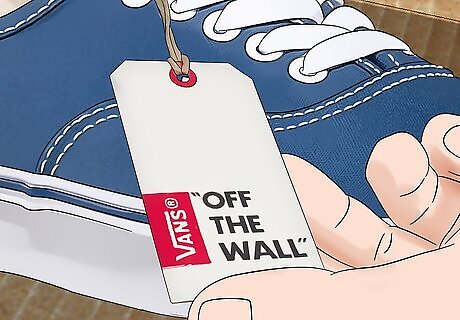
Compare paper tags. Each pair of Vans shoes should come with a paper tag tied on to it, sporting the company logo. If you have a real pair on hand, compare the size and font of the paper tags. Fake Vans will often have bigger paper tags.
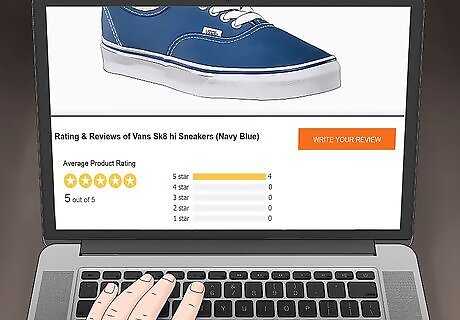
Check out reviews for the dealer. Look up the dealer's name or business online. See if reviews for the dealer are positive. Be sure that the dealer has published their contact information. If they are unwilling to share their phone number or physical address, they might be fake.
Checking the Trademark
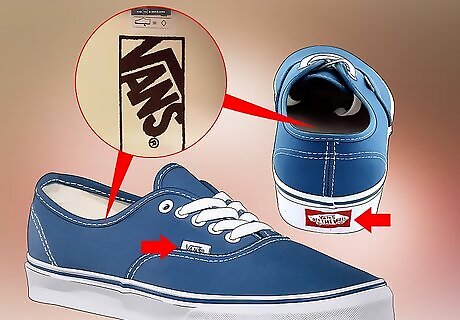
Look for three trademarks. There should be a trademark made of paper on the side of the shoe. There should be another, printed on the plastic on the back of the shoe. There should be one last trademark on the insole.
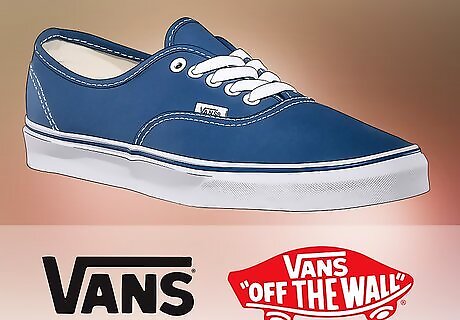
Check for errors in the trademark. The logos should all be spelled correctly. Compare the font on the logos to the font on other Vans shoes that you know are real. The color the trademark is printed in can vary, but the font should always be the same. The “V” should have a long line extending out of its right edge. The “ans" should be under the line.
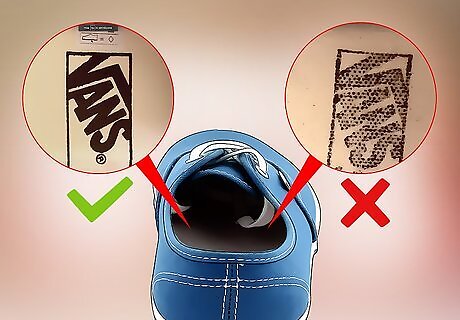
Look for a dark, well-made logo on the insole. On many fake Vans' shoes, the logo on the insole will be faded. The real one will be well colored in, bright, and easy to read.
Checking for Shoe Quality
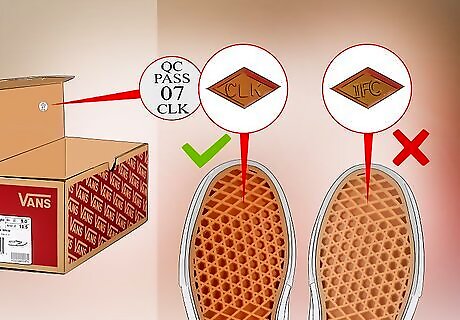
Check the bottom pattern on the sole. Real Vans have an interlocking patterns of two different shapes: rhomboids and diamonds. There should be a three letter country code printed in one of the rhomboids. The three letter country code should correspond to a code on the sticker on the inside of the box.
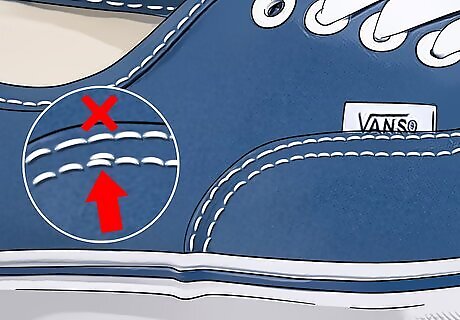
Examine the stitching. Real Vans have tight, even stitching. If there is double stitching, with two stiches in one hole, then the shoes are likely not real. Similarly, if any of the stitching patterns are not straight or the holes are at irregular distances, the shoes are likely fake.
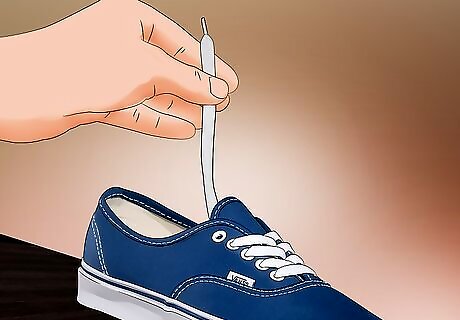
Feel for firm laces. The laces on the shoes should be firm to the touch. Fake shoes will often have very soft laces.
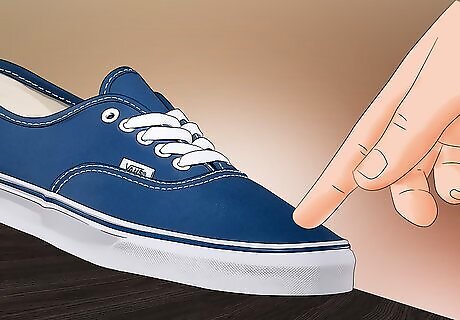
Check the rubber collar on the toe. Vans shoes have a rubber collar on the toe that protects it from wear and tear. Whereas the rest of the rubber will be smooth, the toe will have a rough texture. If there is not much of a pattern on the toe, then the shoes might be fake. There should also be a slight gap between the rubber collar and the cloth of the shoe. That gap will be composed of a small layer of smooth plastic, like that around the rest of the shoe. On many fake Vans, the rubber collar will extend all the way to the cloth, with no gap. Compare the rubber collar to a pair that you know is real. The texture should be similar.
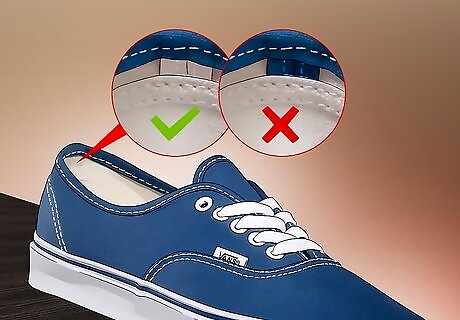
Check for a red piece of cloth on the inside heel. On the inside heel, there should be a little piece of red cloth. It will be at the very top of the heel, but will not extend more than half an inch past the top of the heel.
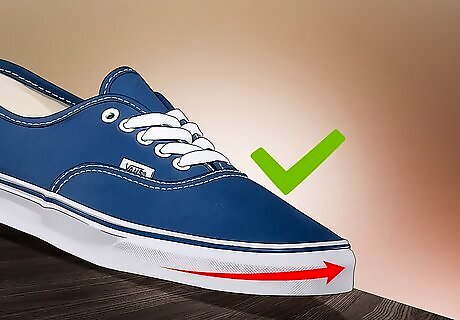
Check the angle of the toes. The shoes should bend up slightly, so that the toes face up. If the bottom on the shoes is flat, the shoes are likely fake.
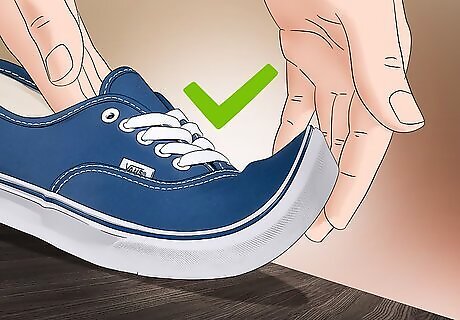
Check that the toes bend. The toes should be bendable. You should be able to press on the heel and the toe, so that the back and front of the shoe touch. If the shoes are stiff, they're fake.
















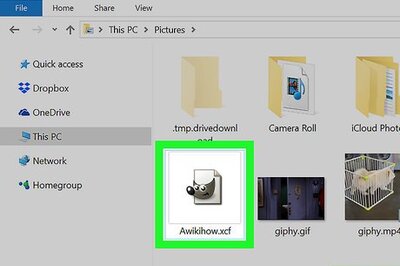

Comments
0 comment